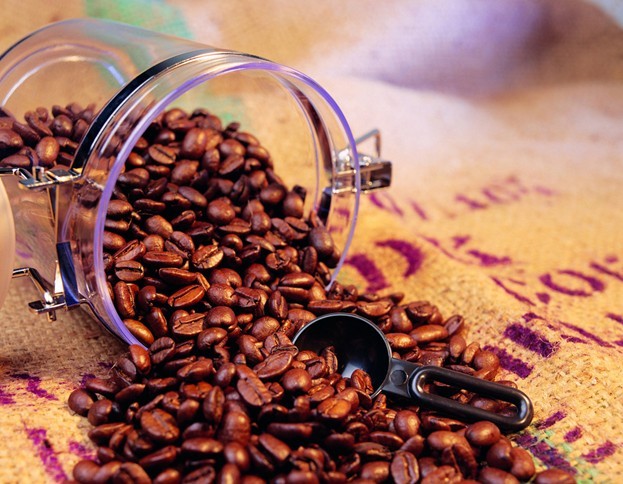How to judge the classification, quality and taste of coffee beans
a. Washing / non-washing
Washing type: in the sink, after rubbing with water and utensils, the pulp and colloid are removed and dried, which is called washing coffee bean with uniform quality.
Non-washing type: after the sun is naturally dried, the pulp and peel is removed by a sheller, and its quality is unstable.
b. Flat beans / round beans
The fruit of coffee consists of two oval seeds opposite each other. The connecting side of each other is a flat joint, which is called flat bean. But there is also a round seed called a round bean, which tastes no different. Ripe and red coffee cherries have multiple structures. In the middle is the predecessor of the coffee bean, the light green seed.
Generally speaking, the fruit of coffee is made up of two oval seeds opposite each other. The side that connects with each other is a flat joint, so it is called flat bean. But some are made up of a round seed, and its taste is no different.
c. The size of coffee beans
Filter number (mesh no.) Coffee bean size
Flat beans:
20-19 extra large
18 big
17 quasi-big
16 ordinary
15
14 small
13-12 extra-small
Round beans:
13-12
11 quasi-big
10 ordinary
9
8 small
d. Altitude
According to the elevation of the cultivated land, it can be divided into three, four, seven and other grades. Generally speaking, the quality of highland beans is better than that of lowland beans, and the price is higher because of the increase in freight.
Grade name elevation (m)
1 special grade beans 1.500 ~
2 first-class beans 1.200 and 1.500 ~
3 medium beans 1.000 and 1.200
4 special water washing beans 9001.000
5The beans are washed with good water 760mm 900.
6 special water washing beans 610-760
7 excellent water washed beans ~ 610
"fresh" is the most important factor in buying coffee beans. There are several steps to judge whether the beans are fresh or not.
1. Grab a handful of coffee beans and feel whether they are solid beans with the palm of your hand.
2. Whether it is enough to smell the aroma close to the nose.
3. Put a bean into your mouth and bite it twice. There is a clear sound indicating that the bean is well preserved and not damp.
If you want to buy a single product of coffee beans, grab a handful of coffee beans in the palm of your hand, in addition to the above judgment, but also look at whether the color, grain size and shape of each bean are similar, so as not to buy mixed beans. If you buy mixed beans, it is normal to have different colors, grain sizes and shapes. Some of the beans seen on the market are shiny and some are dull and colorless, because some beans have been fried and some have not yet. It is normal for heavy-baked coffee beans to produce oil, but it is not good for light-baked beans to produce oil, and the beans may not be fresh at this time! Heavy-roasted coffee beans are full-bodied and will overwhelm the flavor of light-roasted beans, so the best ratio when mixing the two beans is 1 (heavy baking): 3 (light roasting). Of course, this is not the required ratio, you can try several different proportions. If you use Turkish coffee beans or Espresso coffee beans, because the aroma of these two kinds of beans is very rich, you can mix them with some light-roasted coffee beans. The ideal situation is that the freshly fried coffee beans should not be used immediately. They should be stored in sealed cans for about seven days. After all the fragrance is released, it will be better to grind them. Remember how much to drink and how much to grind each time in order to maintain the aroma and freshness of the coffee.
Source:
The blog of the Global Coffee Corridor
Important Notice :
前街咖啡 FrontStreet Coffee has moved to new addredd:
FrontStreet Coffee Address: 315,Donghua East Road,GuangZhou
Tel:020 38364473
- Prev

The method of taking beans: the difference, operation introduction and advantages of sun, water washing and half-sun and half-washing.
Today, I'd like to introduce the way to get beans from coffee: everyone knows citrus. Banana。 Apples and other fruits are rich in organic acids, immature fruits eat sour and astringent taste, ripe fruits taste sweet and delicious, because the organic acids of the fruit are converted into sugar. Coffee should also be picked after it is red and ripe, and the beans are more sweet. If the coffee farmer wants to save trouble, regardless of the coffee fruit
- Next

How to select raw coffee beans? how to choose the quality of coffee beans? how to choose cooked beans? how to choose cooked beans?
Freshness is the life of coffee. There are three steps to determine the freshness of coffee beans: smell, see, and peel. First, smell the coffee beans close to the nose, smell deeply, whether you can clearly smell the aroma of coffee beans, if so, it means that the coffee beans are fresh enough. On the contrary, if the aroma is weak, or if the smell has begun to appear greasy (like peanuts or nuts for a long time)
Related
- What is the meaning of lactic acid fermentation with coffee bean treatment?
- How to judge the state of foam by sound?
- How does the latte pull out the unicorn pattern? Come to get for a little trick to improve the flower pull!
- Will flower pulling affect the taste of the latte?
- Do you know the history of coffee?
- The difference between honey treatment and sun washing what is raisin honey treatment?
- What kind of milk can a novice use to make coffee foam to keep the foam longer? The correct method and skills of milking tutorial sharing
- Why do washed coffee beans taste sour? Flavor characteristics of washed Coffee
- Introduction to the skill of how to practice the size and height of water injection around the circle of hand-brewed coffee
- How do beginners practice coffee flower drawing from scratch?

